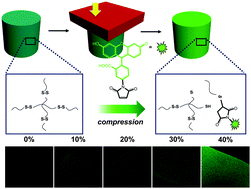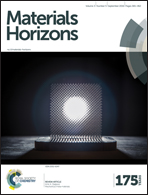Mechanochemical functionalization of disulfide linked hydrogels†
Abstract
Poly(ethylene glycol) hydrogels with disulfide linkages are functionalized through applied force. Compression or tension induces bond rupture at the relatively weak disulfide linkages, which will subsequently react through Michael-type addition with an acceptor molecule within the gel. We demonstrate the utility of this approach by patterning cell adhesion proteins through compression of a lithographically structured stamp, where cells predominately adhere to the compressed regions.


 Please wait while we load your content...
Please wait while we load your content...